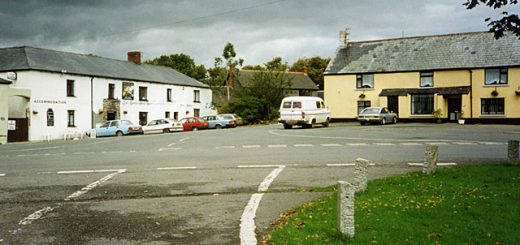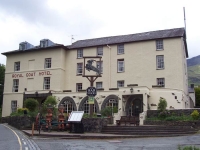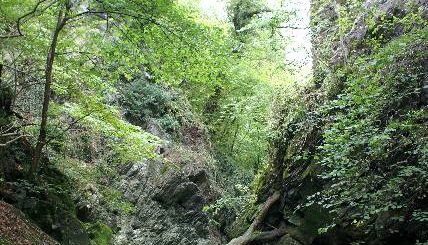Covent Garden Underground Railway Station
Covent Garden Station opened on 11 April 1907 and serves the Piccadilly Line. It is said to be haunted by the apparition of a tall man wearing white gloves, a top hat and a frock coat and grey suit. This figure has been reported many times since the 1950’s though recent sightings are uncommon. He has been seen in the tunnels and the staff rest room. The apparition may have been more common in the winter months.
 The apparition has been identified as William Terriss, who it is said, apparently would visit a baker’s which used to occupy the current location of the station. William Terriss (William Charles James Lewin) was born in London on 20 February 1847. Before taking to the stage William is said to have tried his hand at several different careers in various parts of the world. These included sheep farming in the Falkland Islands, Tea growing in Bengal and Silver mining in America. Terriss made his first London stage appearance in 1871 and eventually became well known for playing swashbuckling heroic parts such as Robin Hood.
The apparition has been identified as William Terriss, who it is said, apparently would visit a baker’s which used to occupy the current location of the station. William Terriss (William Charles James Lewin) was born in London on 20 February 1847. Before taking to the stage William is said to have tried his hand at several different careers in various parts of the world. These included sheep farming in the Falkland Islands, Tea growing in Bengal and Silver mining in America. Terriss made his first London stage appearance in 1871 and eventually became well known for playing swashbuckling heroic parts such as Robin Hood.
Whilst working on a play called Harbour Lights, Terriss who was the manager and owner of the Adelphi Theatre took offence with a Scottish actor who usually filled minor rolls and fired him for unprofessional behaviour and heavy drinking. This actor was called Richard Archer Prince. Prince was mentally unstable and probably an alcoholic. He was upset at being dismissed and reportedly would visit pubs in the West End deframing Terriss’s character. Terriss however had personally recommended Prince to the Actor’s Benevolent Fund and hrough this he received financial support.
 On 14 December 1897 Prince was seen arguing with Terriss in William’s dressing room at the Adelphi Theatre where he was in a play called Secret Service. On 16 December, desperate for money, Prince approached the Actors’ Benevolent Fund’s office on Adam Street and demanded money from the secretary, Mr Colston. It was explained to Prince that the emergency committee would be meeting the following day and his case could be discussed then. Prince then went outside, crossed the road and awaited in Maiden Lane where he knew Terriss had a private entrance into the Adelphi Theatre.
On 14 December 1897 Prince was seen arguing with Terriss in William’s dressing room at the Adelphi Theatre where he was in a play called Secret Service. On 16 December, desperate for money, Prince approached the Actors’ Benevolent Fund’s office on Adam Street and demanded money from the secretary, Mr Colston. It was explained to Prince that the emergency committee would be meeting the following day and his case could be discussed then. Prince then went outside, crossed the road and awaited in Maiden Lane where he knew Terriss had a private entrance into the Adelphi Theatre.
Prince then stabbed Terriss three times, wounds from which died shortly afterwards. On his arrest Prince stated “He has had due warning, and if he is dead, he knew what to expect from me. He prevented me getting money from the Fund today, and I have stopped him!” Terris was buried at Brompton Cemetery.
Prince was found guilty but was considered to be insane and committed to Broadmoor Asylum. He died in Broadmoor in 1936.
William Terriss is also said to haunt the Adelphi Theatre outside which he was murdered.




Re: Covent Garden Underground Railway Station
According to Andrew Green:
‘Foreman Jack Hayden at Covent Garden Station is adamant that he has seen the phantom several times over a period of ten years and is convinced it is of Terriss. The figure is of ‘a man wearing a grey suit, old fashioned collar and white gloves’. Jack told me emphatically during a film making session at the underground station in 1973, ‘I just know it is William’. However, John Harries in his ‘Ghost Hunters Book’ claims that the haunting was known to exist well before 1907. Whoever it is not only frequents the station, where he has been seen by several members of the London Transport Staff, but also the nearby theatre. One of the theatre’s electricians, working late one night, saw the apparition in a grey suit walking through a whole row of seats and then disappeared through a wall. Strengthening the idea that poor old William is the spectre, were the series of ‘odd rapping noises’heard by the theatre staff coming from the dressing room used by the actor. But, of course he was not the only one to use the room. One old chap recalls that Terriss used to tap on the door of an adjoining room to let his leading lady know he was going out for a few minutes. There could be, one supposes more than one ghost for there have been ‘many traumatic experiences’within the theatre.’